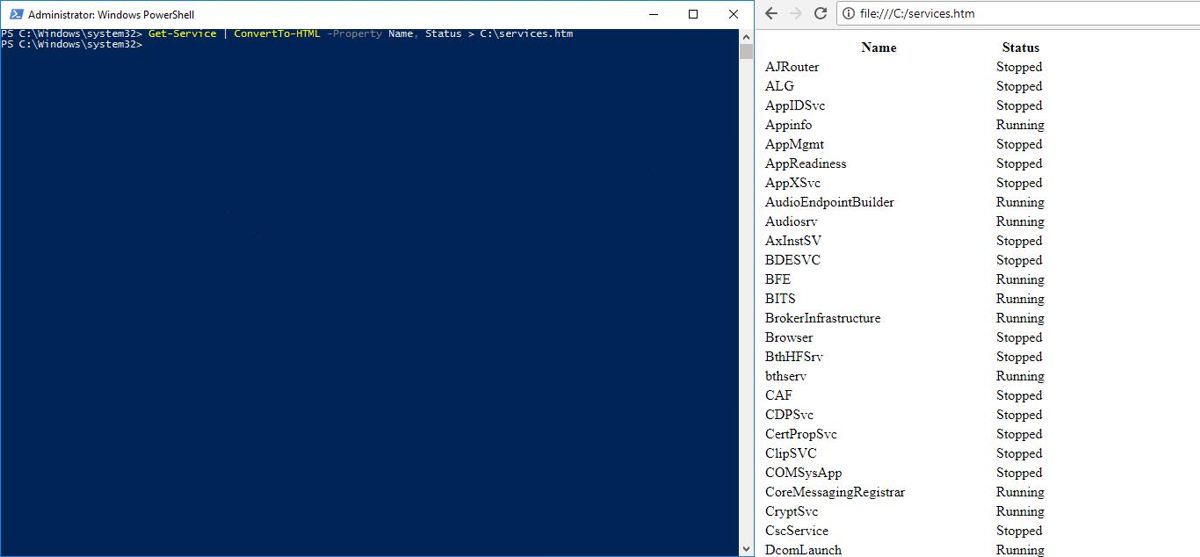20 Windows PowerShell Commands You Must Know
Windows PowerShell is the new command-line shell, which is more powerful and scriptable than Command Prompt. In my three years of experience of using it, I found it really useful, especially if you are into automating or scripting tasks. However, most of us either do not know about it or do not prefer using it in place of the old command-line shell.
In this post, I am going to share useful yet straightforward commands (with examples) of Windows PowerShell. You can use these commands to accomplish numerous tasks — from getting help to starting processes. Shall we begin?
Note: Windows PowerShell is built with backward compatibility in mind, and thus supports many commands of the Command Prompt. That said, you can continue using the old commands in its new, colorful interface.
Read Also: Tips and Tools to Automate Repetitive Tasks on Windows 10
Get-Help [help]
If you are new to PowerShell, you may run into troubles; and in such situations, Get-Help becomes your savior. It provides necessary information about cmdlets, commands, functions, scripts, and workflows of the PowerShell.
Moreover, it’s easy: you need to type Get-Help followed by the command, of which, you seek the details. For example, you can get information about “Get-Process” using Get-Help Get-Process.

Get-Command [gcm]
Windows PowerShell allows discovering its commands and features using Get-Command. It displays the list of commands of a specific feature or for a specific purpose based on your search parameter.
You only need to type Get-Command followed by your search query in the PowerShell. For example, Get-Command *-service* displays commands with “-service” in its name. Please remember to use the asterisks on both sides of your query because it is a wild card that helps to search for the unknown.
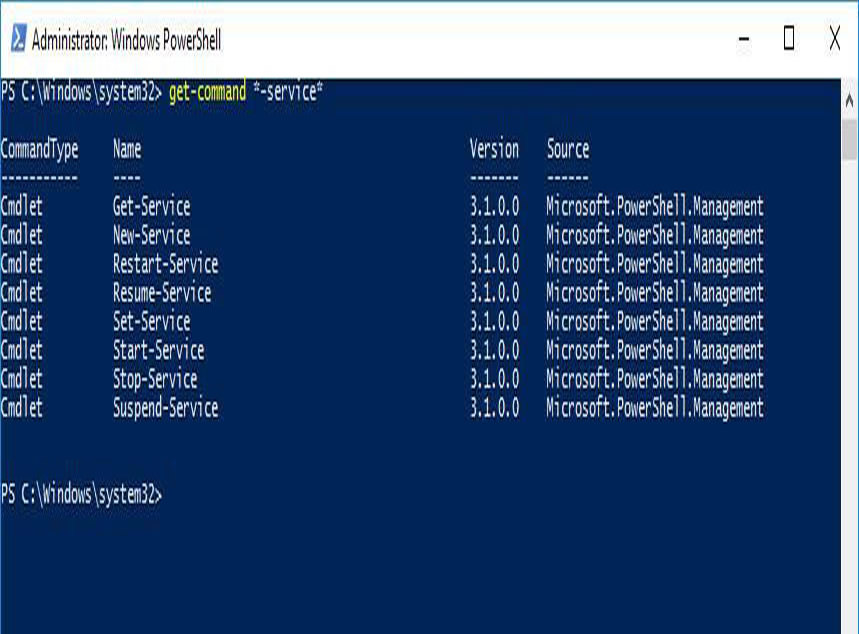
Invoke-Command [icm]
When you wish to run a command or a script of PowerShell — locally or remotely on single or multiple computer(s) — “Invoke-Command” is your friend. It is easy-to-use and helps you to batch-control computers.
You must type Invoke-Command followed by the command or the script with its complete path. For example, you can run a command “Get-EventLog” using Invoke-Command -ScriptBlock {Get-EventLog system -Newest 50} or on a remote computer “Server01” using Invoke-Command -ScriptBlock {Get-EventLog system -Newest 50} -ComputerName Server01.

Invoke-Expression [iex]
Invoke-Expression runs another command or expression. If you are providing an expression or a string as its input, this command first evaluates it, then runs it, but also works only locally, unlike the previous command.
You must type Invoke-Expression followed by a command or an expression. For instance, you can assign a variable “$Command” with a string telling the command “Get-Process”. When you run Invoke-Expression $Command, “Get-Process” gets run as a command on your local computer.
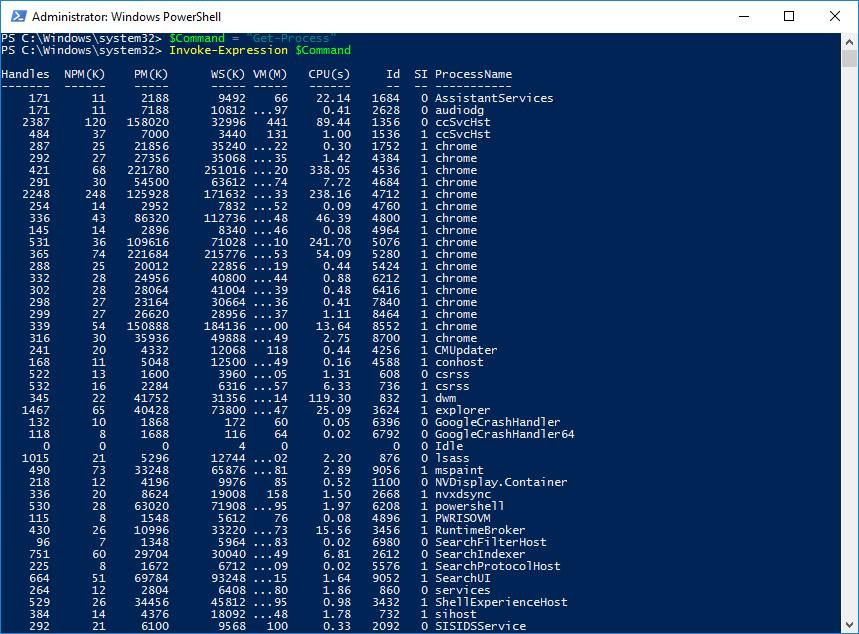
Invoke-WebRequest [iwr]
You can download, log in, and scrape for information on websites and web services while working on Windows PowerShell using the Invoke-WebRequest.
You must use it like Invoke-WebRequest followed by its parameters. For example, you can get the links on a given web page by using the command as (Invoke-WebRequest -Uri "https://docs.microsoft.com").Links.Href.
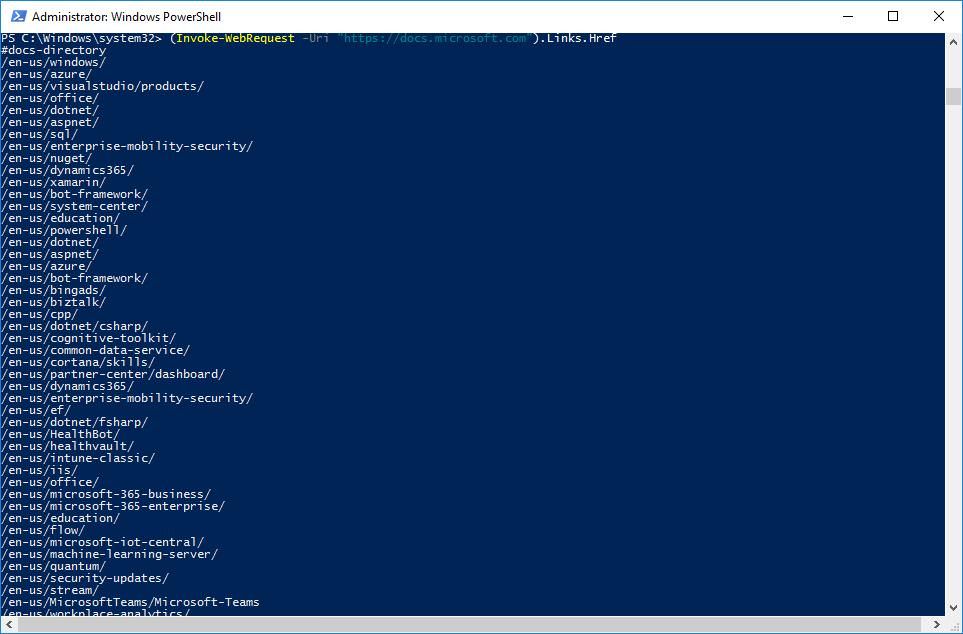
Set-ExecutionPolicy
Although creating and executing scripts (having extension “ps1”) in Windows PowerShell is possible; however, there are restrictions for security purposes. But you can switch the security level using the Set-ExecutionPolicy command.
You can type Set-ExecutionPolicy followed by one of the four security levels — Restricted, Remote Signed, All Signed, or Unrestricted to use the command. For example, you can assign the restricted policy status using Set-ExecutionPolicy -ExecutionPolicy Restricted.

Get-Item [gi]
If you are looking for information on an item at any given location, say a file on your hard disk, Get-Item is the best way to acquire it in Windows PowerShell. You must know that it does not get the contents of the item, such as files and sub-directories in a given directory unless explicitly specified by you.
You must type Get-Item followed by a path or a string along with its parameters if any. For example, you can get all the items (files or folders) beginning with “M” in the current directory using Get-Item M*. Along with content of directories, it can also get the content of registry keys.
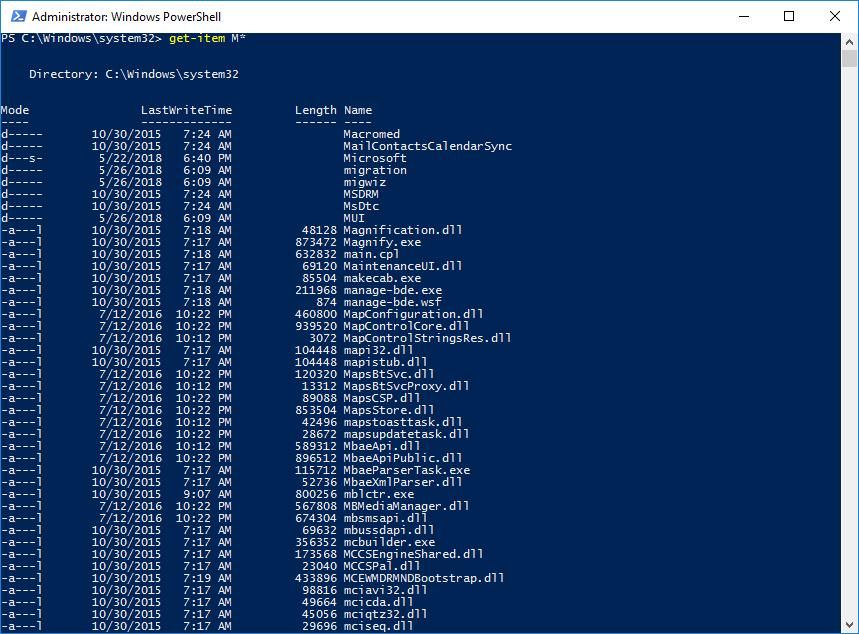
Copy-Item [copy]
If you need to copy files and directories on your storage disk or registry entries and keys in the registry, you can use Copy-Item. It functions similar to the “cp” command we have in the Command Prompt, but it is much better.
You can make use of Copy-Item command to copy and rename items in the same command as well — give a new name as the destination. For instance, you can copy and rename “Services.htm” to “MyServices.txt” using Copy-Item "C:\Services.htm" -Destination "C:\MyData\MyServices.txt".
Remove-Item [del]
If you wish to delete items such as files, folders, functions, and registry keys and variables, Remove-Item is the command for you. What I found interesting is, it provides parameters to include and exclude items.
You can make use of Remove-Item command to delete items from specific locations using parameters. For example, you can delete the file “MyServices.txt” with the command Remove-Item "C:\MyData\MyServices.txt".
Get-Content [cat]
When you need to view the content of a text file at a specific location, you open and read it in a code/text editor like Notepad++. In Windows PowerShell, you can use Get-Content to retrieve the content without opening the file.
For example, you can retrieve 50 lines of content of “Services.htm”, then you can use Get-Content "C:\Services.htm" -TotalCount 50.
Set-Content
You can save text to files using Set-Content, similar to the “echo” command of the Bash Shell. In combination with the Get-Content, you can also retrieve the content of one file and copy it into another file using this command.
For example, you can type Set-Content to write or replace the content of a file with new content. Moreover, you can club it with the previous command’s example to save its output into a new file named “Sample.txt” using Get-Content "C:\Services.htm" -TotalCount 50 | Set-Content "Sample.txt".

Get-Variable [gv]
If you are looking to use variables in Windows PowerShell, Get-Variable command helps you to visualize the values of variables. It shows them in a tabular form and allows including, excluding, and using wildcards.
You can use this command by typing Get-Variable followed by its options and parameters. For example, you can retrieve the value for a variable named “desc” using the following code: Get-Variable -Name "desc".
Set-Variable [set]
You can assign or change/reset the value of a variable using the command Set-Variable. As a shortcut, you can also set a simple variable using the format ${ $VarName = VarValue }$, like $desc = "A Description".
You can use the command Set-Variable followed by its parameters to set a variable. For instance, we can set the value for a variable named “desc” using the command Set-Variable -Name "desc" -Value "A Description".

Get-Process [gps]
We usually use Task Manager to find the running processes on our computer. In Windows PowerShell, anyone can use Get-Process to get the list of currently running processes, which you can further process as well.
You can write the command as Get-Process along with your search query. For example, if you need information about the processes with “explore” in their name, you can type Get-Process *explore* (note the asterisks).
Start-Process [saps]
Windows PowerShell makes it easy to start one or more processes on your computer. I found this command is handy in scripting apps since it is one of the must-have commands you will need for automating a task.
You can type Start-Process followed by its parameters to use the command. For instance, you can start Notepad by typing Start-Process -FilePath "notepad" -Verb runAs in the Windows PowerShell.

Stop-Process [kill]
You can stop specific or all instances of a process running on your computer using its name or PID (Process ID), thanks to the command Stop-Process. What makes it compelling is, you can detect a process is stopped or not and you can even stop the processes not owned or started by the current user.
You can type the command Stop-Process followed by its parameters to stop the given processes. For example, you can stop all the processes of Notepad using the command Stop-Process -Name "notepad".
Get-Service [gsv]
When you need information on specific services (running or stopped) on your computer, you can use Get-Service. It displays the services installed in your system and provides options to filter and include and exclude them.
If you wish to use this command, you can type Get-Service followed by its parameters. For example, type the following Get-Service | Where-Object {$_.Status -eq "Running"} to get the services “running” on your system.

Start-Service [sasv]
If you wish to start a service on your computer, Start-Service command can help you do the same from Windows PowerShell. I found it is powerful enough to start a service even if that service is disabled on your computer.
You need to specify the name of the service while using the command Start-Service. For instance, Start-Service -Name "WSearch" starts the service “Windows Search” on your local computer.
Stop-Service [spsv]
If you wish to stop services running on your computer, Stop-Service command will prove helpful. You need to specify the name of the service along with Stop-Service. For instance, type Stop-Service -Name "WSearch" to stop the service “Windows Search” on your computer.

ConvertTo-HTML
PowerShell can provide amazing information about your system. However, it is mostly presented in an indigestible format, but you can use ConvertTo-HTML to create and format a report to analyze it or send it to someone.
You can use ConvertTo-HTML along with the output of another command using piping. For example Get-Service | ConvertTo-HTML -Property Name, Status > C:\Services.htm displays the list of all the services and their status in the form of a web report, which is stored in the file “Services.htm”.
